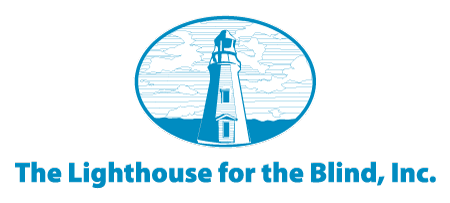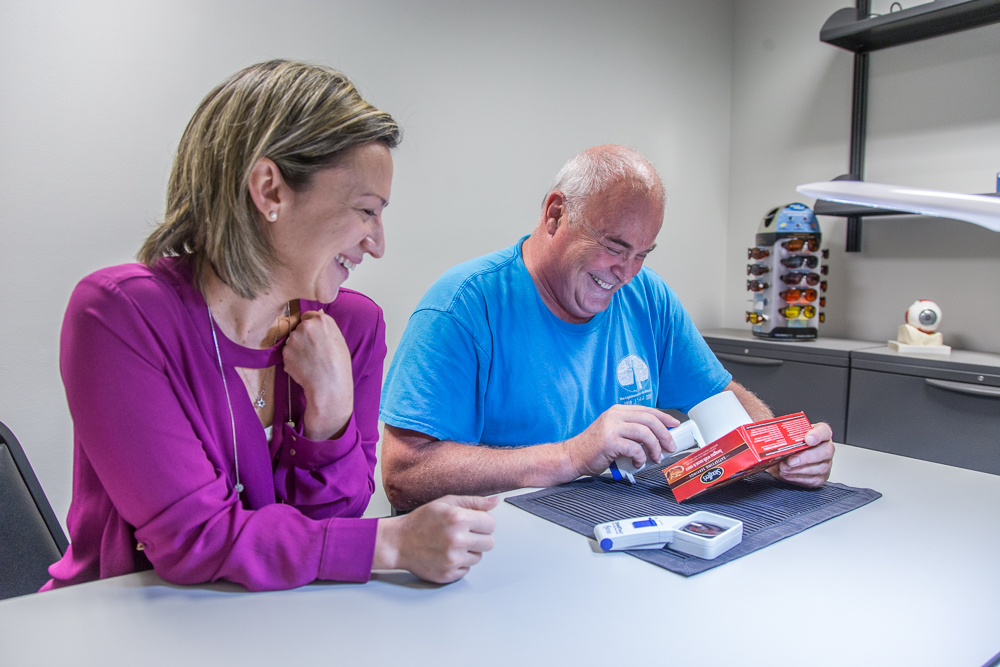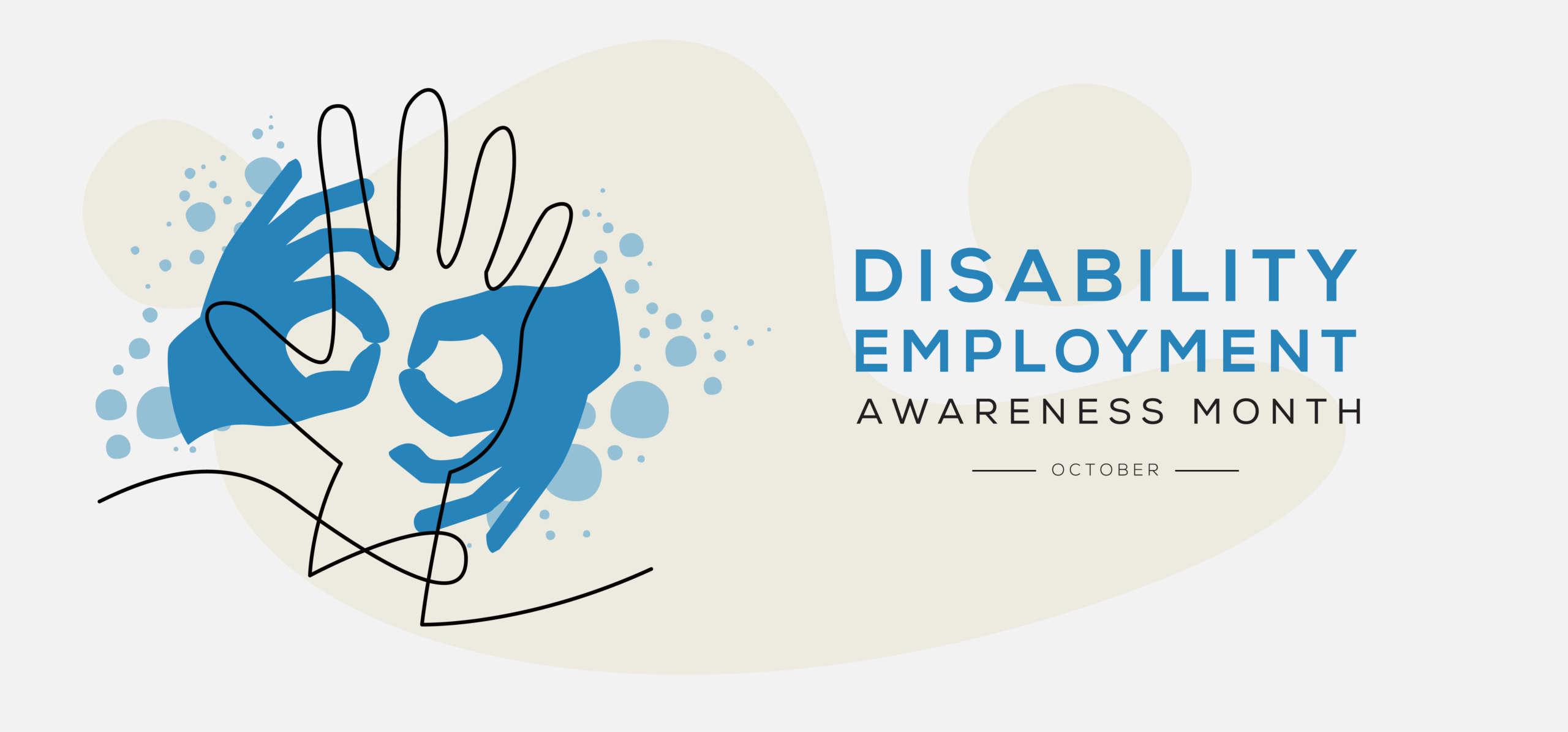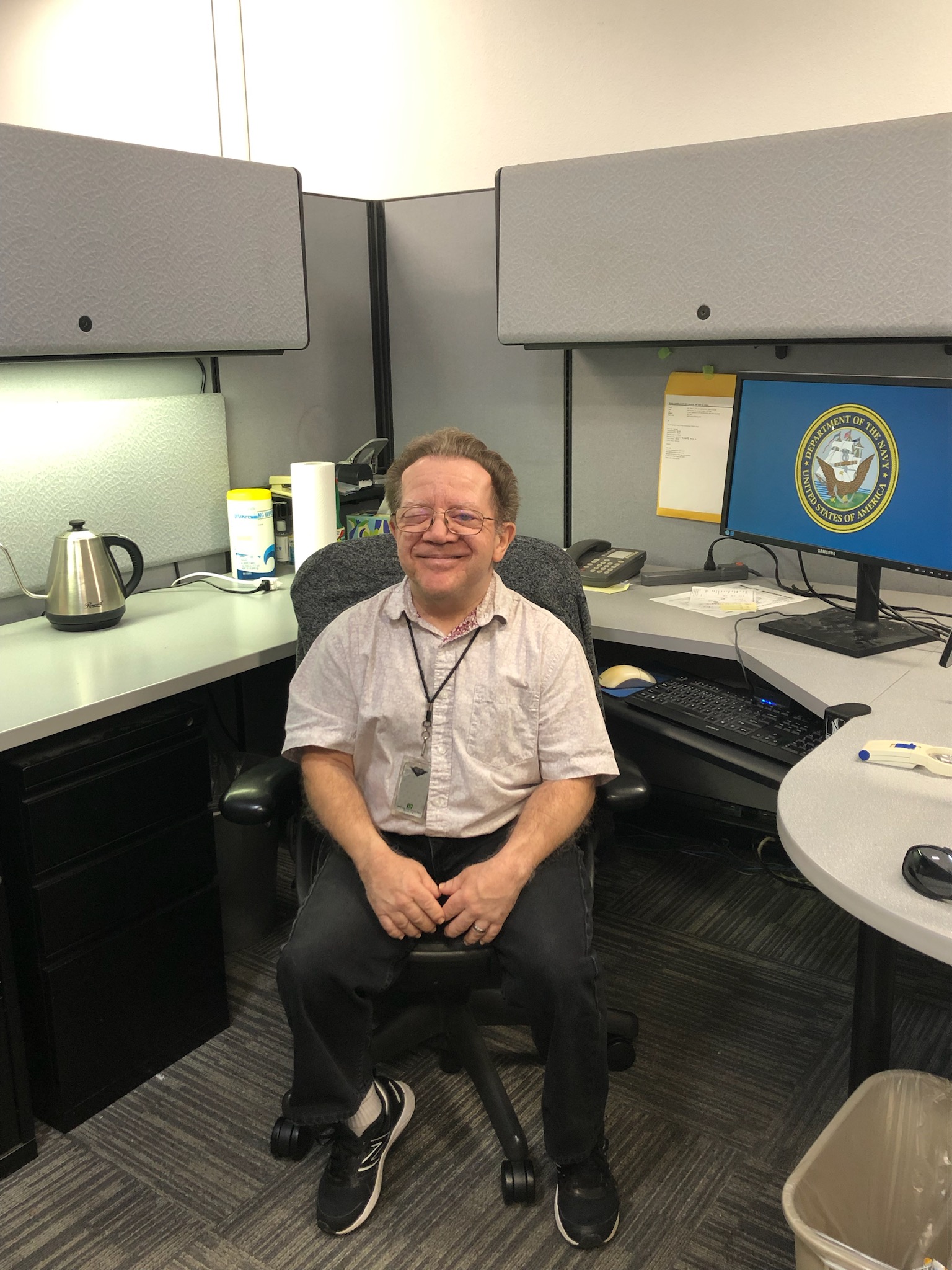6 low-cost ways to make your workplace accessible

There is an incredible amount of high-tech technology and adaptive equipment available that can make your workplace accessible for people who are blind or low vision! Did you know that there are also several free and low-cost adjustments you can implement to make your existing workplace accessible for employees who are blind or low vision, as well?
Remember, vision is a spectrum! This means that the needs of people who are blind or low vision can vary greatly. While some of these solutions might work for some, they won’t work for others. It’s important to speak with an individual to find out what works best for them. Remember to check back in, as vision can change over time.
Consider the lighting of a room
There are many types of lighting choices available. Finding the right setup for each individual is important. A good place to start is to use a combination of ambient lighting and task lighting. Ambient lighting illuminates an entire space or room, like an overhead light. Task lighting is a focused light used for specific activities such as reading or writing. Good general lighting will help eliminate shadows, while task lighting will provide ample light for an activity. Moving a common lamp closer to a workstation can sometimes be an effective form of task lighting. However, some prefer a lamp with an adjustable arm that can be maneuvered to avoid glare.
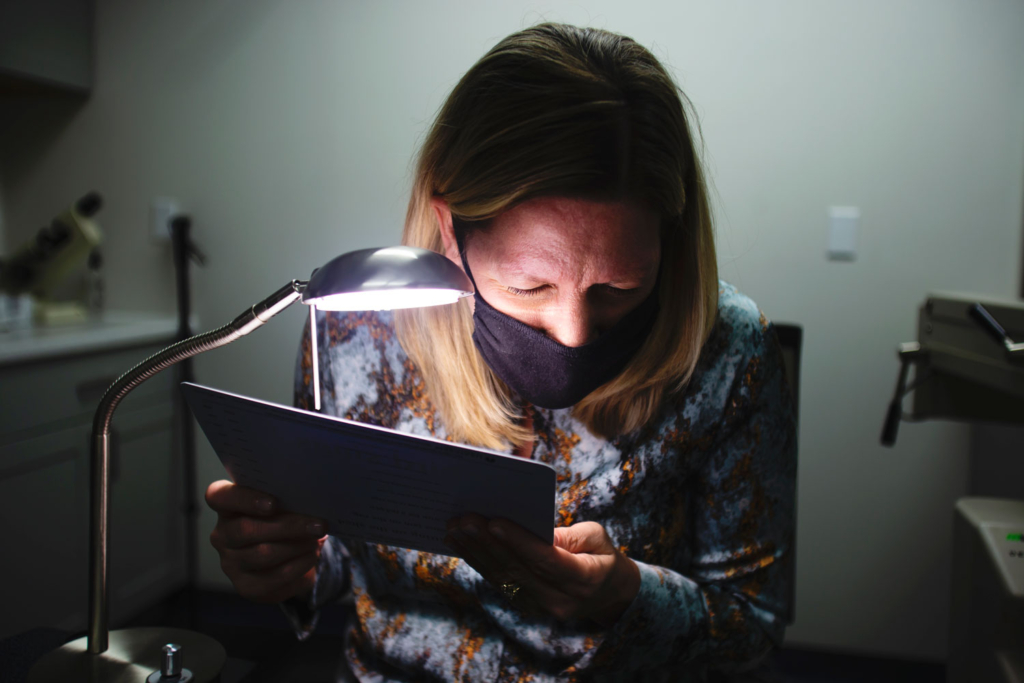
A woman wearing a mask holds a paper close to her face and a small direct task light shines down on it.
Install blinds, shades, or curtains on windows to help block out glare
Glare is often a major obstacle for individuals with vision impairment. Window coverings help reduce the amount of light, and glare, in a room. They can also be adjusted throughout the day to adjust to changing light conditions outside. Blinds, shades, or a sheer curtain can provide softer light, or block out light entirely. Positioning a chair, table, or workspace to avoid looking directly at light coming through the window can help reduce glare, as well.
Adjust your dress code policy to allow for sunglasses and hats
Blue light waves are given off by sunlight, fluorescent and full spectrum lighting. Sunglasses or reading glasses that are tinted with an amber color may help reduce glare resulting from these lights. Tinted lenses are a good solution to help reduce glare. This is especially true if the light is reflecting from a flat surface, such as a book, newspaper, magazine or table. A hat with a brim or visor can also help limit the amount of light that enters the eye from above.
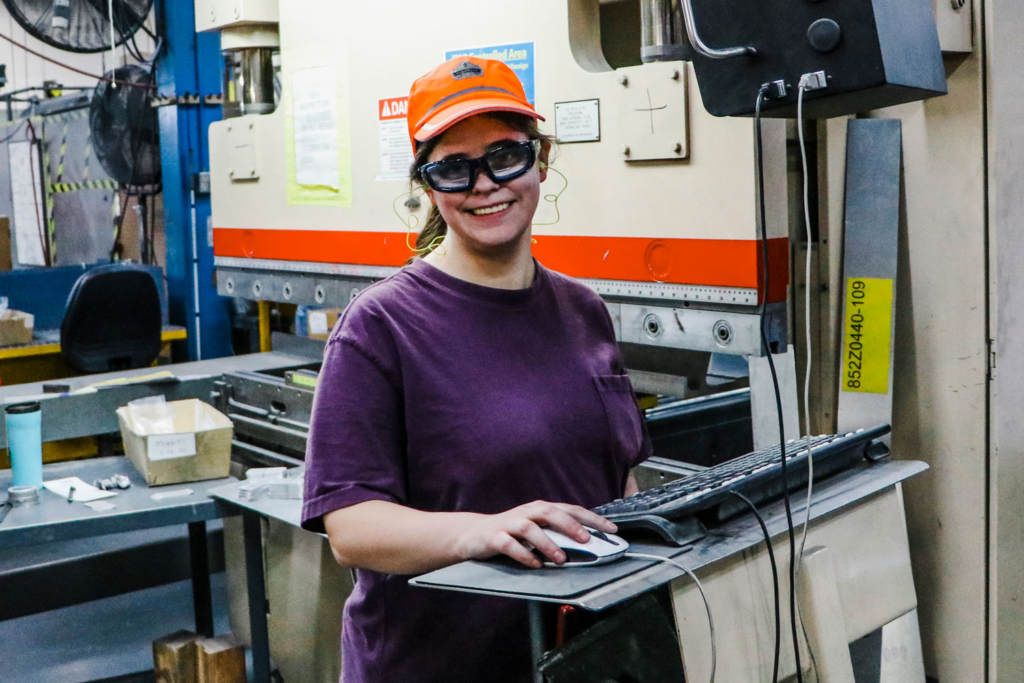
A woman standing at a workstation, posing and smiling. She is wearing a purple shirt, an orange hat, and dark glasses.
Whenever possible, utilize high contrast colors
Implementing contrast is one of the simplest and most effective ways that you can increase the visibility of a physical space. Contrast helps objects become more visible by making them more easily distinguishable from their background. What this looks like in each and every workplace will vary greatly. Painting or marking highly used handles with bright tape is a good place to start. You can also consider painting doors so that they contrast against walls. Make sure door handles contrast, as well.
At the Lighthouse we keep our blind, low vision, and DeafBlind employees in mind when choosing colors. Each room has a wall that is painted dark blue so that employees, and sign language interpreters, are more easily visible against it. You will even see people who are interpreters or signers wearing dark colors (if they have light skin) with no busy designs or stripes. It’s easier for visual signers to see the hand shapes when signing.
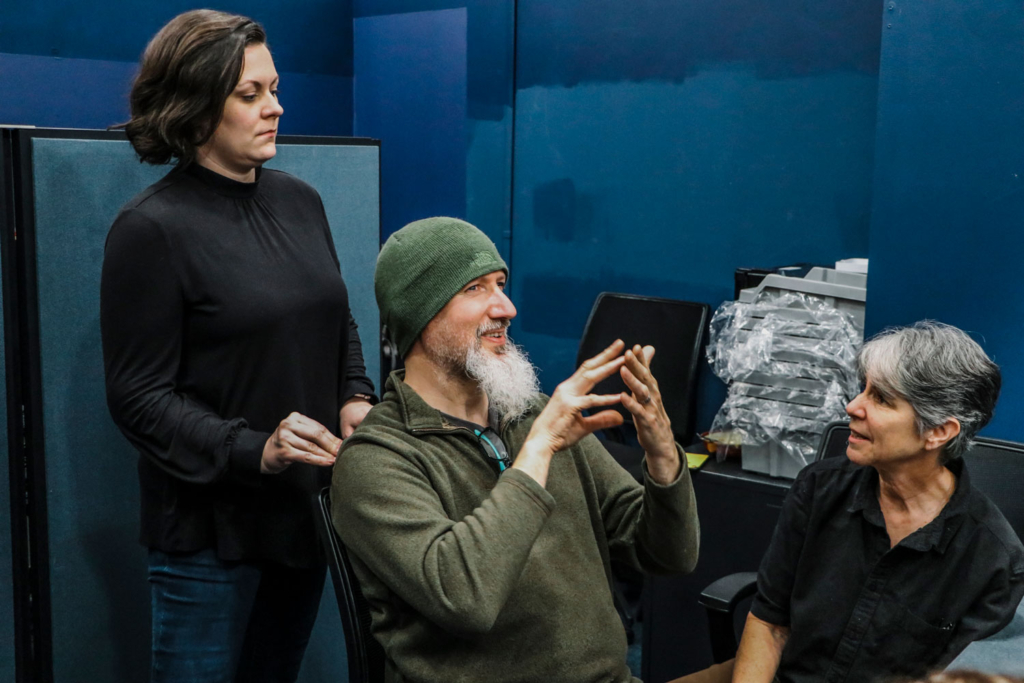
Three people in a room, with a dark blue wall in the background. A man wearing green is sitting and signing, while one interpreter is in front of him and another is standing behind him singing on his back.
Implement large print or tactile labeling
Consider implementing large print or tactile labels in places such as mailboxes, on break room cabinets, or on buttons to appliances.
Labels can also help someone with low vision distinguish between different versions of similar items, such as pens or different paper stocks in the supply closet.
Invest in handheld magnifiers
These are the most common type of magnifiers due to the ease of use and portability. They can be used with or without glasses. Handheld magnifiers are available with illumination which can help significantly when needing to perform tasks in poorly lit environments. These types of magnifiers are convenient for short-term “spotting” tasks such as looking at labels, price tags, gauges, viewing dials or appliance controls. Hand-held magnifiers are difficult to use for prolonged viewing tasks as they require steady coordination to maintain focus and will not work if both hands are needed.
